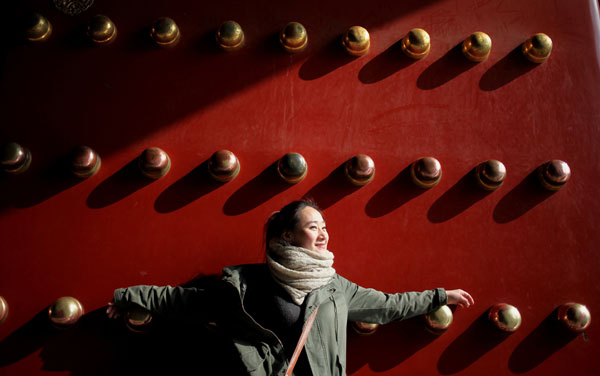Forbidden City still lures inquisitive public
Updated: 2012-02-16 09:54
By Tang Yue, Zhang Yuchen and Wu Wencong (China Daily)
|
||||||||
History and splendor fascinate new generation, Tang Yue, Zhang Yuchen and Wu Wencong report in Beijing.
Oct 10, 1925. The day that China opened the door to arguably its most mysterious treasure: the Forbidden City.
After serving as a home to 24 emperors during the Ming (1368-1644) and Qing (1644-1911) dynasties, as well as a political and ceremonial center for 500 years, the huge complex was opened to the public as the Palace Museum.
"On the first day, tens of thousands of citizens desperate to see the imperial home and treasures flooded in," historian Wu Ying wrote at the time. "It was so crowded, some people were unable to move for two hours and missed the opening ceremony."
Today, the Forbidden City stirs just as much curiosity - and, at times, controversy.
After a turbulent 2011, new curator Shan Jixiang on Tuesday revealed how the museum plans to cope with the challenges of the modern age: open more areas to handle more visitors and better protect its relics.
"It's going to be a challenge," Shan told reporters at a news conference. "We can't solve the problems (we have) by simply raising the price (of admittance) and shutting out tourists."
Since inviting the public in to enjoy its architecture and vast collection of antiquities, the Palace Museum has been one of Beijing's most popular destinations. (The museum was closed during the War of Resistance against Japanese Aggression (1937-45) and the "cultural revolution" (1966-76).)
Last year, the museum received a record-breaking 14.2 million visitors from home and abroad, twice the amount that passed through its doors in 2002. And the figure is expected to increase by 10 percent this year.
 |
|
The Palace Museum gate in Beijing is often used as a backdrop for tourist photos. Wang Jing / China Daily |

 Relief reaches isolated village
Relief reaches isolated village
 Rainfall poses new threats to quake-hit region
Rainfall poses new threats to quake-hit region
 Funerals begin for Boston bombing victims
Funerals begin for Boston bombing victims
 Quake takeaway from China's Air Force
Quake takeaway from China's Air Force
 Obama celebrates young inventors at science fair
Obama celebrates young inventors at science fair
 Earth Day marked around the world
Earth Day marked around the world
 Volunteer team helping students find sense of normalcy
Volunteer team helping students find sense of normalcy
 Ethnic groups quick to join rescue efforts
Ethnic groups quick to join rescue efforts
Most Viewed
Editor's Picks

|

|

|

|

|

|
Today's Top News
Health new priority for quake zone
Xi meets US top military officer
Japan's boats driven out of Diaoyu
China mulls online shopping legislation
Bird flu death toll rises to 22
Putin appoints new ambassador to China
Japanese ships blocked from Diaoyu Islands
Inspired by Guan, more Chinese pick up golf
US Weekly

|

|






